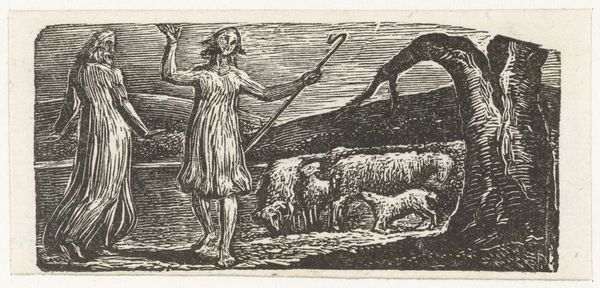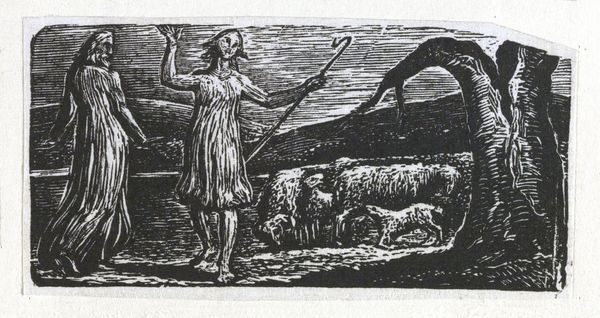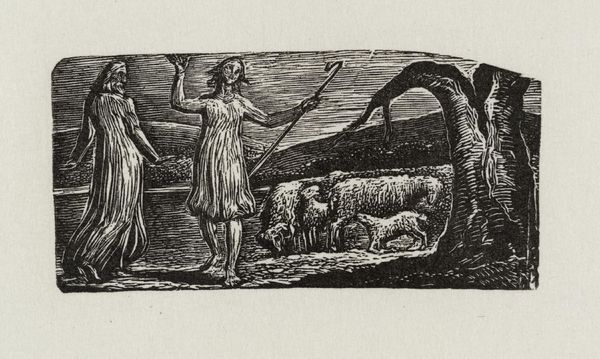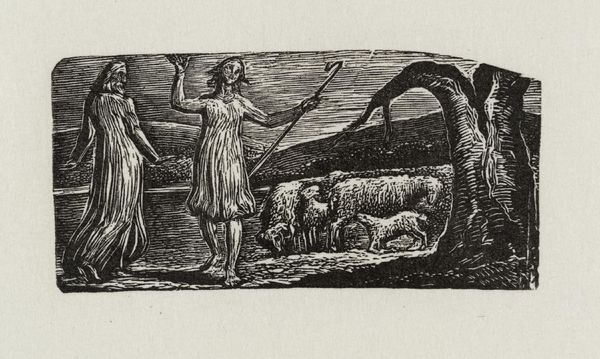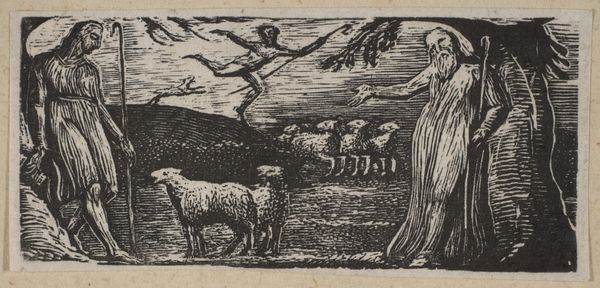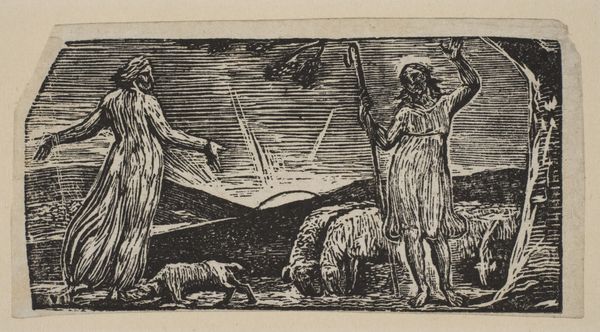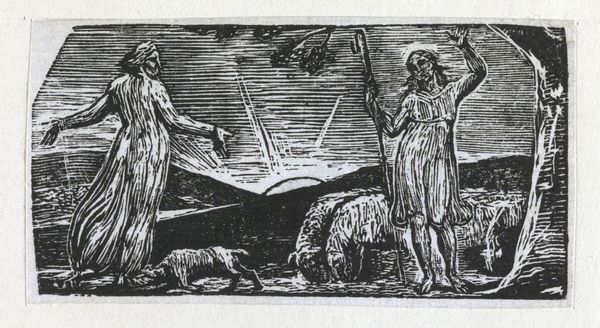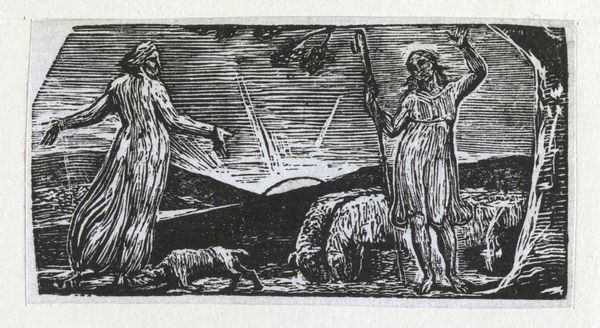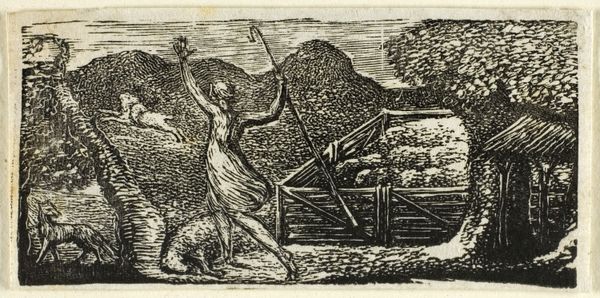
Colinet Departs in Sorrow: Riven Trunk at Right, from The Pastorals of Virgil 1821
0:00
0:00
drawing, print, paper, ink, engraving
#
drawing
#
narrative-art
# print
#
landscape
#
figuration
#
paper
#
ink
#
romanticism
#
line
#
engraving
Dimensions: 36 × 74 mm (image/block); 40 × 78 mm (sheet)
Copyright: Public Domain
Curator: William Blake’s engraving, “Colinet Departs in Sorrow: Riven Trunk at Right, from The Pastorals of Virgil,” dating back to 1821 and residing here at the Art Institute of Chicago, offers a window into both the artistic skill and societal anxieties of the Romantic era. Editor: It strikes me immediately as stark, even melancholic. The intense contrast between light and shadow emphasizes the barren landscape and the figure’s desolate gesture. Curator: Blake, profoundly influenced by political radicalism, was deeply critical of the social injustices prevalent during his time. "Colinet Departs" serves as a powerful allegorical representation of displacement and loss. Consider the impact of issues surrounding agrarianism and social disruption. The character of Colinet, as a dispossessed shepherd, becomes symbolic of a community fractured by oppressive systems. Editor: The linear quality in his engraving technique is fascinating. The density of the lines seems to generate the overall form—figures and trees. There's an emotional intensity to it as well, like a raw nerve exposed through the engraving. Curator: It's tempting to analyze this through the lens of postcolonial studies and ecocriticism, particularly with its overt depictions of exploited land and its people. Note the ravaged tree. Blake subtly critiques the imperial ambitions reshaping England's rural identity. It underscores a lament for lost traditions and underscores his visionary concern for ecological balance, anticipating our contemporary environmental dialogue. Editor: The visual imbalance intrigues me, that void in the center of the scene. It's as if the formal rupture is intentionally guiding us towards some profound symbolic dissonance that mirrors this emotional disturbance. Curator: I appreciate that observation. The scene evokes multiple layers of socio-historical, political, and philosophical dimensions through its figures and landscape elements. By intertwining the fate of humanity and nature, Blake implores his audience to reassess our roles within intricate societal structures and how that affects self identity. Editor: Precisely. By understanding its formal language, the narrative transcends the immediate setting of the Virgil poem and speaks to something profound in the shared human condition. Curator: Well, this exercise highlights, again, how contextual elements are essential. Editor: Indeed, but also, we understand that these socio-historical components do depend on and reciprocally inform our aesthetic appreciation of the engraving.
Comments
No comments
Be the first to comment and join the conversation on the ultimate creative platform.
